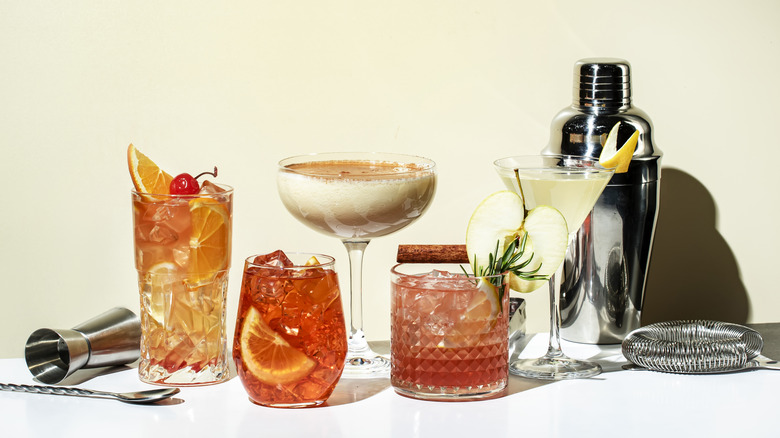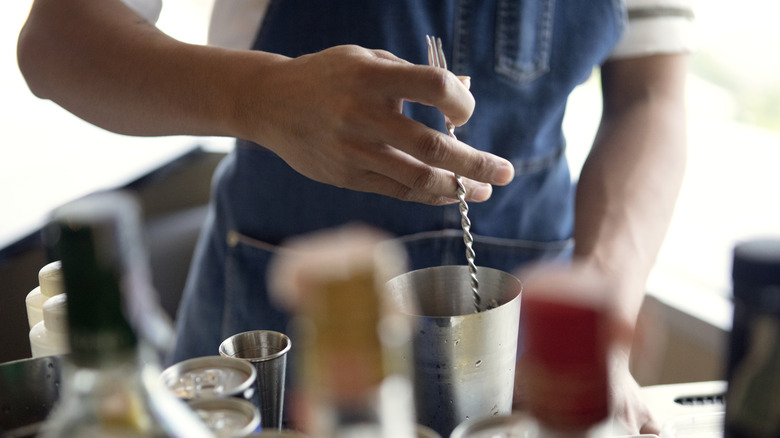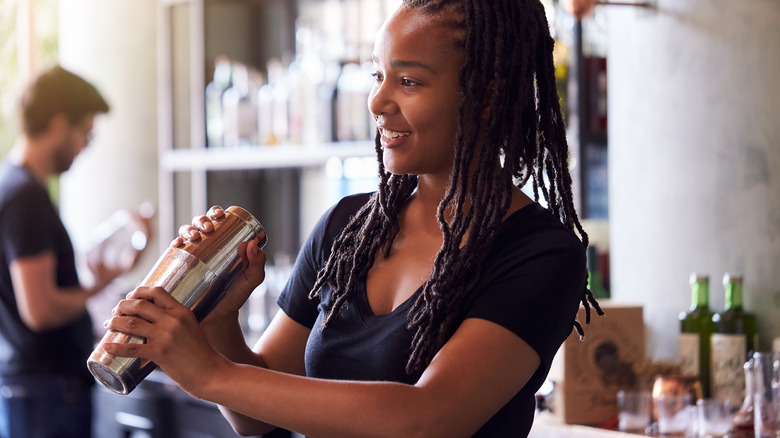The Rules For When To Shake Versus Stir Any Cocktail
Ask just about anyone how James Bond prefers his signature cocktail, and they'll have the answer ("shaken, not stirred") ready. However, why this step in the cocktail-making process is so significant — and why Bond's order contradicts conventional bartender wisdom — is not as well-known. To better understand why some drinks are shaken and others stirred, it's important to recognize that these two techniques affect the outcome of the cocktail in different ways, impacting factors such as temperature, consistency, flavor, and appearance. Both processes assist in chilling and diluting a drink, but the act of shaking has a more notable impact on its texture through aeration. This process incorporates tiny bubbles into the mixture, resulting in a smooth, foamy mouthfeel.
When deciding between a shaken and stirred drink, the choice comes down to whether you want something lighter and more refreshing, or something more grounding and suited for sipping. Generally, shaken drinks, flavored with fruit juices or topped with egg whites, fall into the former category, while stirred drinks, made by combining a few strong alcohols, fall into the latter. That's why a martini — despite Bond's famous order — is typically prepared using a stirring glass to maintain the clarity in appearance and flavor of the spirits, usually a combination of gin or vodka and vermouth.
How shaking and stirring affect your drink
The most obvious purpose of shaking or stirring any drink is to evenly combine all the ingredients, ensuring that every sip offers a more or less uniform taste of the individual flavor components. This way, you never get a mouthful that is only simple syrup or straight booze. However, these two mixing methods are multifunctional and can be utilized to achieve very different results.
For a stirred cocktail, the liquids are poured into a stirring glass, which is then filled with ice. A bar spoon is used to swirl the ice around within the glass, chilling the drink while also diluting it slightly with water to soften the intensity of the alcohol.
For a shaken cocktail, the ingredients are poured into a shaker with ice. With the lid fastened securely, the bartender shakes the mixture for about 10 seconds. Although this step similarly serves to chill and dilute the drink, it has an additional purpose — shaking emulsifies and aerates the mixture, creating an airy texture. In the final step of both methods, the ice is removed with a strainer before the cocktail is poured into a fresh glass.
Tools and techniques for shaken and stirred cocktails
Shaking and stirring cocktails require a certain amount of technique and a few specific tools. Classic shaken cocktails include citrusy drinks like a daiquiri or a bee's knees, as well as frothy egg white cocktails such as a pisco sour. To make these at home, you will need a good shaker that securely contains your drink as you shake it. It's not too complicated, but there is a wrong way to shake a cocktail. Therefore, you will want to be careful with the motion and duration of this particular step, ensuring not to shake for too long or too vigorously.
Stirred cocktails include many timeless favorites, like an old fashioned or a Manhattan. For the best at-home bar experience, invest in a clear, sturdy stirring glass to safely stir and carefully monitor the mixing of your cocktail. Whether using a shaker or a stirring glass, pre-chilling your preferred mixing tool by placing it in the freezer in anticipation of cocktail hour is advisable.



